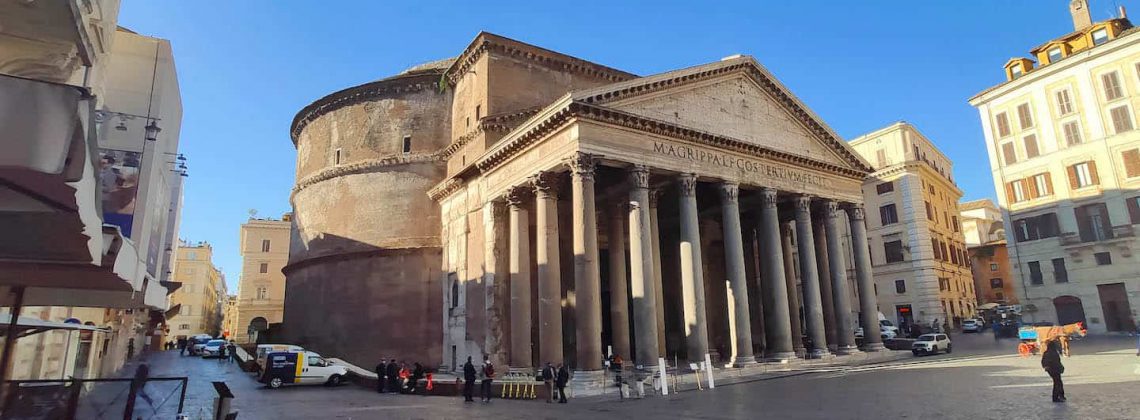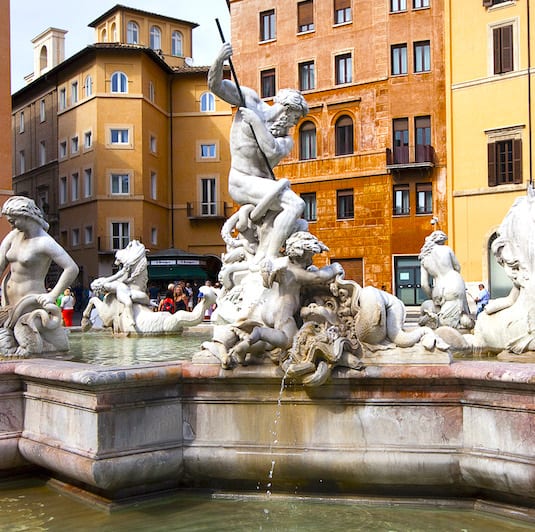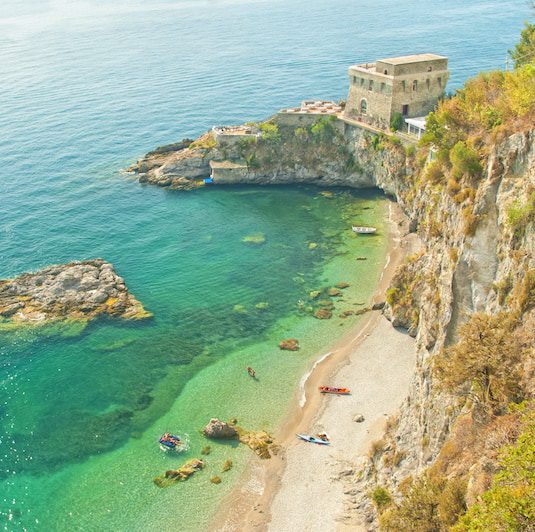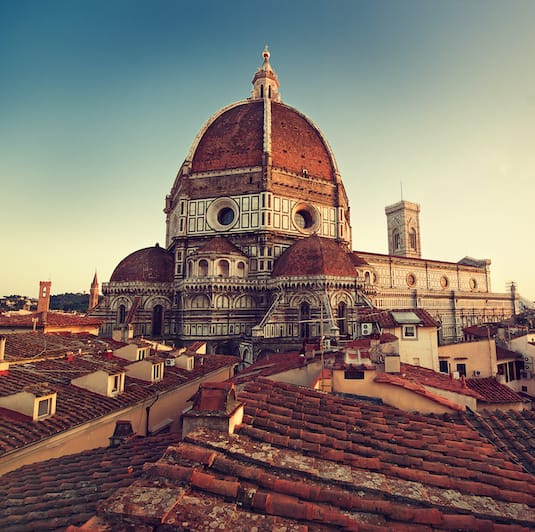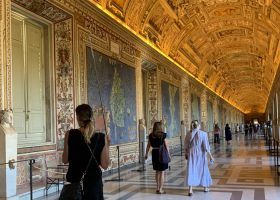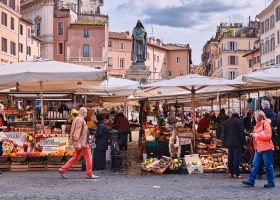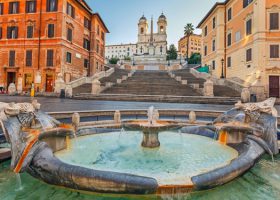Heading to the Pantheon but unsure what to do nearby? The Pantheon is one of the world’s greatest preserved buildings from antiquity, attracting visitors of all kinds over the last 2,000 years. Here are the top things to see and do near the Pantheon.
Pro Tip: It’s easier to organize your trip when you have all your resources in one place. Create a browser folder and bookmark this post. Also, check out our guide to Rome for more planning resources, our top Rome tours for a memorable trip, and the best restaurants near the Pantheon.
What To See and Do Near the Pantheon
After you finish exploring Rome’s best-preserved building from antiquity, the Pantheon, be sure to spend some time in the neighborhood. There are plenty more gems to discover. Use the menu below to explore Rome’s top attractions in other neighborhoods.
Not ready to book a tour? See if Rome tours are worth it.
11. Get Rome’s Most Famous Coffee at Sant’Eustachio Cafe
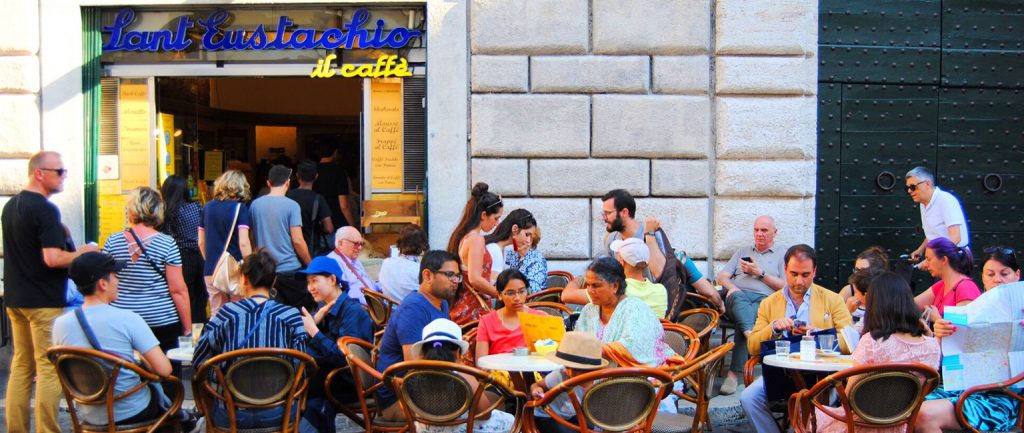
€ | Breakfast | Outdoor Seating | Kids
Looking for breakfast or a coffee near the Pantheon? Sant’Eustachio is the place to get both, especially coffee. Cafe Sant’Eustachio is renowned in Rome for having the best espresso on Earth! They have a method of adding sugar into the coffee for you with la frusta!
You’ll have to look that one up but there’s really only one way to understand: rock up here one morning, grab a table, and order a coffee with a cornetto. This is a Rome must! Looking for more great places to eat? Check out our annually updated guide to restaurants near the Pantheon.
Address: P. di Sant Eustachio 82
10. The Church of S. M. Maddalena
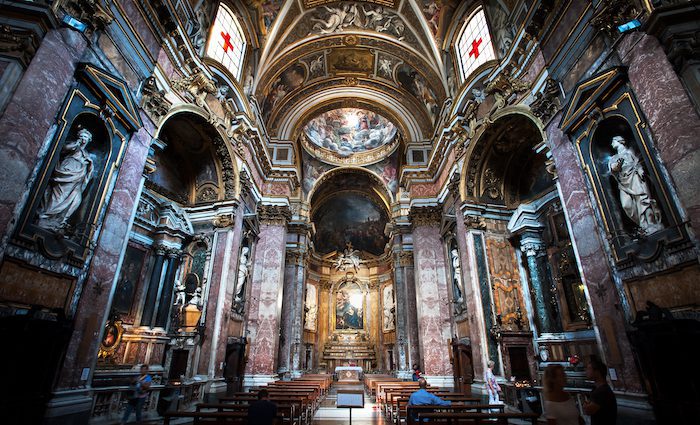
Looking for something off the beaten path that will knock your socks off? This unassuming church is it! This small and beautiful is one of our favorites in Rome.
They completed the church in 1699 and the exterior facade in 1734. The facade is rococo in style, which makes it very unusual and unique for Rome—and a good reason to see it. The style is considered the last movement of the Baroque era and uses a certain symmetry and rolling style to create a dramatic orchestration.
The interior of the church is also very beautiful. Don’t miss the frescoes adorning the vaulted ceiling, which draws you to the front of the church. You can enter the chapel on the front right dedicated to Saint Camillus, who dedicated himself to those who had the plague. As you turn around to leave the church, you will be awed, in baroque fashion, by the beautiful organ that covers the back wall.
Address: Piazza della Maddalena, 53
Not ready to book a tour? Check out our best Rome tours to take and why.
9. Cocktails at Salotto 42
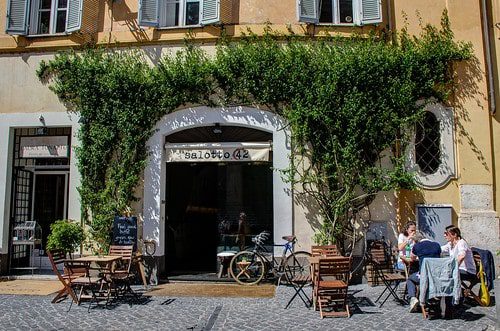
Walking through Rome in the evening is a wonderful and eye-opening experience in every sense of the word. In the center, there are very few places like Salotto 42 that are so heavily frequented by locals. This hole-in-the-wall cocktail bar is famed for its aperitivo, craft cocktails, and its ever-changing interior design.
Around 7:30 pm, the location fills up and overflows into the piazza, which is one of the most beautiful in Rome. This is because it is flanked by number seven on this list, the Templed of Deified Hadrian. Please do stop by this cocktail bar and have a glass of wine or, more appropriately, a cocktail recommended by the bartenders.
Address: Piazza di Pietra, 42
8. Gelato Giolitti vs Della Palma
At this point, you may want to get some gelato. There are two famed gelaterie in the area: Della Palma and Giolitti. Both are easy to find with a quick map search and Della Palma is visible as you walk out of S. M. Maddalena down the alley to your right. They both have about an uncountable amount of great reviews, so you are safe at either. That said, Goilitti may be more famous and considered better. At this level, though, they’re all really good.
If you don’t like crowds, you could try another of our favorites Cremeria Monteforte, which is pretty calm and right next to the Pantheon. As a rule of thumb, if the flavors have electric colors, avoid that gelateria. Gelato is an all-natural dessert from simple ingredients—no food coloring!
Address: Della Palma | Giolitti | Cremeria Monteforte
Popular Rome Tours
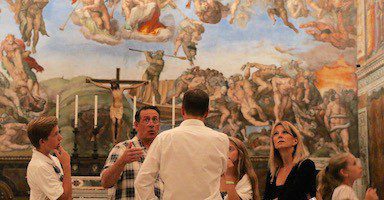
Best Seller
Privileged Entrance Vatican Tour with Sistine Chapel
This our most popular and longest-running Vatican tour to date. You’ll enter the Vatican Museums an hour before the public opening and see the breathtaking Sistine Chapel. Admissions are included and our English-speaking guides do a wonderful job bringing the museums to life!
See Prices
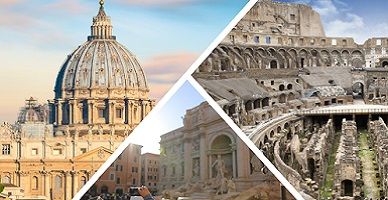
Customer Favorite
Rome in a Day Tour with Vatican, Sistine Chapel, Colosseum, and More!
Looking to get much of your sightseeing done in one day? This tour enters the Vatican an hour before opening and visits the Colosseum along with other sites like the Pantheon, Piazza Navona, and Trevi Fountain. All admissions and transportation are included as well as a licensed, English-speaking guide!
See Prices
Not ready to book a tour? Find out if Rome tours are worth it.
7. Temple of the Deified Hadrian
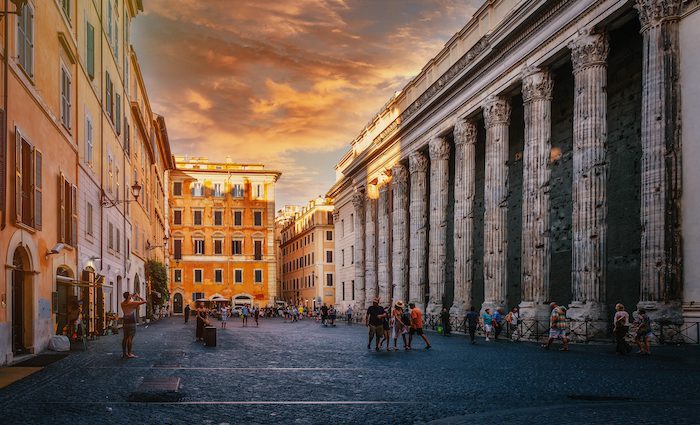
If you’re a history geek like us, you know very well who Hadrian is and his profound impact on Rome and the Roman Empire. Like many Romans, Hadrian was openly gay or bisexual, and his lover Antinoüs is one of the most sculpted and depicted personalities in history. Hadrian loved him so much that he had him sculpted endless times and even named a city after him.
The Romans are often criticized for being barbaric—and they were in many ways, but in at least this area they were more advanced than us.
Hadrian was one of the “Five Great Roman Emperors” and arguably the greatest and most beloved of them all. He is known for the massive construction and expansion of the Empire, including commissioning the Pantheon.
When Hadrian died, he was deified by his adopted son and successor Antonius Pius who would go on to adopt the great Marcus Aurelius. All of whom were part of the five great Roman Emperors.
Address: P.za di Pietra
6. The Church of S. M. Sopra Minerva
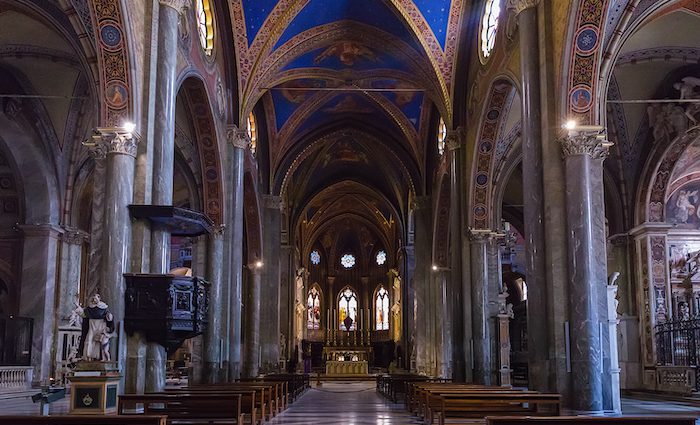
This is a Dominican-order church and one of the most famous in Rome. The word sopra means above and finds its place in the name since this church is literally built above the Temple of Isis, which the Catholic church thought was the Temple of Minerva—no big deal.
This is the only gothic church in the city of Rome, which makes it a real treat! The facade is renaissance but when you walk in you’d think you were in Paris. Not only will you find the head of St. Catherine of Siena, one of the pivotal saints during the medieval times, but also a statue by Michelangelo ( Read Below)!
Be sure to check out the Carafa Chapel by Filippino Lippi and the Aldobrandini Chapel by Giacomo della Porta and Carlo Moderno (these two were big-time artists). The next stop gets its own point due to the artists but it’s inside S. M. Sopra Minerva.
Address: Piazza della Minerva, 42
5. Michelangelo’s Christ the Redeemer
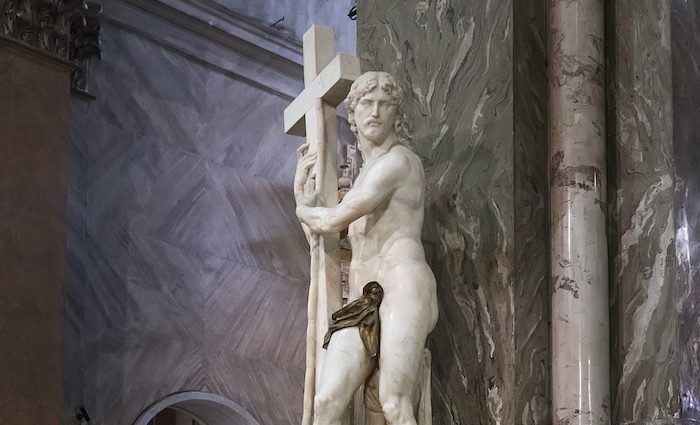
This statue goes by a few names such as Christ the Redeemer, Christ Carrying the Cross, Christ of Minerva, and Risen Christ. The statue was finished in 1521 and is located on the left side of the main altar. It is a beautiful statue with a complicated story.
Michelangelo started the work but abandoned it when he noticed a black vein running through the marble of Christ’s left cheek. He started a new one, which he worked on and sent to Rome for one of his students to finish. Federico Frizzi repaired the damage done by the student Pietro Urbano. Metello Vari, who commissioned the work, was very happy with the result. He also asked for the original unfinished statue to put in his garden. Michelangelo agreed.
The original garden statue disappeared from history only to reappear on the radar in the year 2000 in nearby Viterbo. The black vein on the cheek made it very easy to recognize. The original shows Christ nude but the one you’ll find has him covered up by a cloth.
Address: Piazza della Minerva, 42
4. The Flood Lines of the Field of Mars
The area where the Pantheon and the Church of Santa Maria Sopra Minerva lie is named the Field of Mars or Campus Martius. Some of the floods have been pretty destructive as the Tiber River doesn’t like to be told what to do—until the large walls were built around the river in the late 19th century that is.
However, the Tiber still manages to threaten the area with floods. This is why many of Rome’s bridges have large circular holes in them—to relieve pressure from floodwaters if levels rise to the height of the bridge.
You can see flood markers on the right-hand side of the entrance as you walk in. Some of the plaques are so tall you couldn’t reach them standing on someone else’s head.
Top-Rated Rome Tours
Not ready to book a tour? Check out our best Rome tours to take and why.
3. Bernini’s Elephant Statue
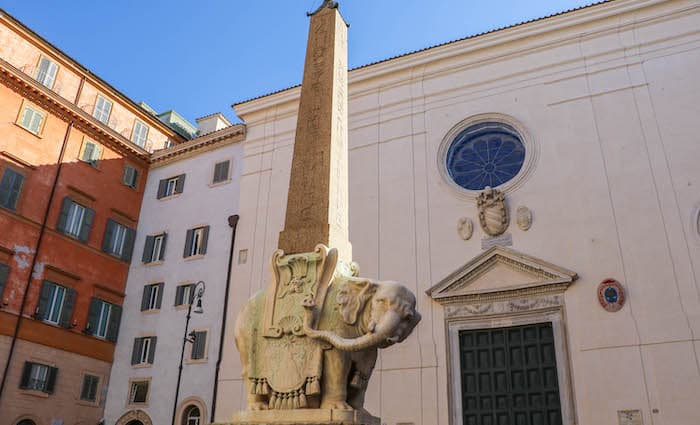
Commonly referred to as Elephant & Obelisk, this statue features an Elephant carrying an obelisk designed by Gian Lorenzo Bernini in 1667. It is directly in front of Santa Maria Sopra Minerva Church in Piazza della Minerva. You can’t miss it.
Archeologists found it during excavations to build the church behind it. They date it to the 26th Dynasty of Egypt in about 580 B.C., which makes sense because they built the church over the Egyptian temple.
It is the smallest of the 13 obelisks in Rome and one of eight that came from Egypt. Rome is home to more obelisks than any other destination in the world including Egypt where they all came from.
Bernini chooses the Elephant, according to inscriptions, as a symbol of strength and divine wisdom. Like any famous monument, it comes with a good story.
The Story of the Elephant’s Backside
During the construction, a priest named Father Paglia made some suggestions that turned into demands. Bernini’s engineering prowess fell under question after some massive mistakes in the design of the bell towers on St. Peter’s Basilica. They removed the bell towers in 1624 midway through the work, which tarnished Bernini’s reputation. Father Paglia forced Bernini, according to the story, to add more structural support under the elephant instead of relying on its four legs alone.
Bernini’s idea was to show strength by actually showing the strength of the Elephant. Great architecture is suspenseful and that was Bernini’s goal. Paglia eventually won and Bernini complied. This part of the story is true but the next part is likely a myth.
Apparently, Bernini put the elephant’s bottom facing where Father Paglia’s office was. He also relocated the elephant’s tail to be off to the side indicating that the elephant may be, well, using the potty. This would all be summed up as the artist having the last word, as they say, but it’s likely based on legend.
Address: Piazza della Minerva, 69
2. Fontana del Pantheon
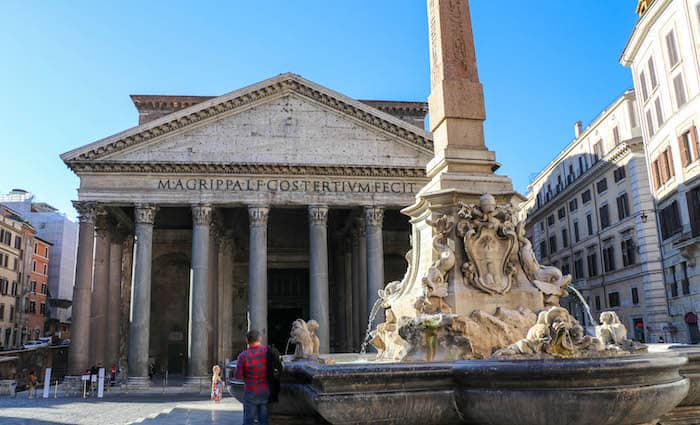
Situated outside the Pantheon, La Fontana del Pantheon is a 16th-century work of art commissioned by Pope Gregory XIII and designed by Giacomo della Porta.
The fountain was later modified in the 18th century. The basin was changed and the Macuteo Obelisk was added, which is original to the time of Ramses II making it over 3,000 years old!
This area, Piazza Rotunda, used to be part of a massive courtyard surrounded by colonnades in antiquity. It extended far past number 10 on this list, the church of S. M. Maddalena, and the ground level was far lower. This likely made it so the Pantheon stood on a pedestal and concealed the dome as you walked into the structure which would have created a surprise effect.
Address: Piazza della Rotonda
1. The Pantheon
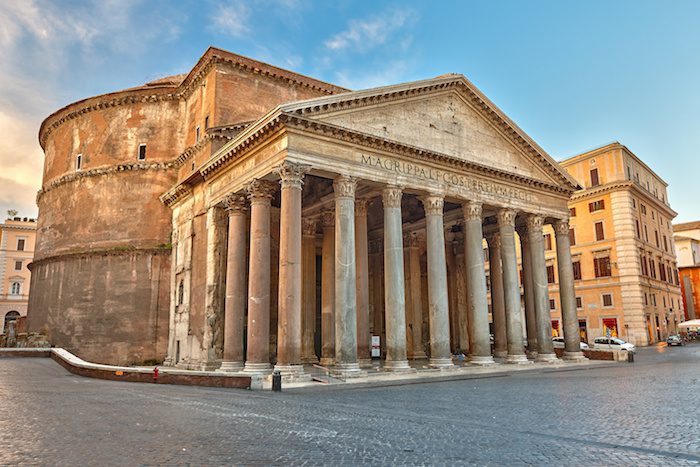
The word Pantheon translates to all-worship or all-gods, depending on how you look at it. Contrary to what many have written on the internet, the use of the building was not to worship all pagan gods. It’s not likely pagan gods appreciated sharing a temple with other gods.
There are some exceptions in the case of gods conjoined in their purposes like Castor and Pollux. Also, a deified couple like Antonius Pius and his wife Faustina share a temple. But in general, the Romans built temples individually dedicated to a single deity.
What the Romans used the Pantheon for is undocumented at best, making any reason provided mostly assumption or a guess. A strong theory from Professor of Archeology Amanda Claridge is that the Pantheon existed for the worship of emperors yet to be deified. It is no mystery that Romans did not like to worship emperors as gods until after their death. Claridge states in her Rome Archeological Guide, “the Pantheon provided a setting—not a temple in the conventional sense—in which the living emperor would appear in the company with the gods (including his own deified predecessors).”
While you are visiting the Pantheon, be sure to check out what to see inside the Pantheon. If you’re a history nerd like us, read up on the Pantheon’s history and/or jump on our Rome in a Day tour, which explores the area with a passionate local guide!
Address: Piazza della Rotonda
Not ready to book a tour? Find out if Rome tours are worth it.
Here’s Where To Stay in Italy’s Most Popular Destinations
Rome, Florence, Venice, Amalfi Coast, and Capri

